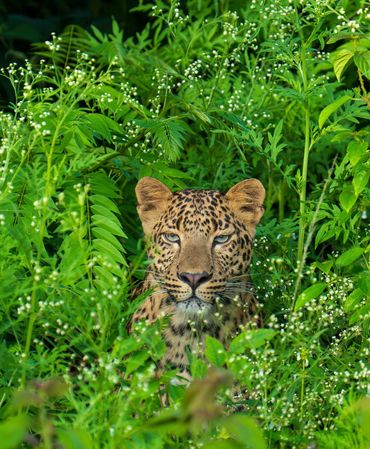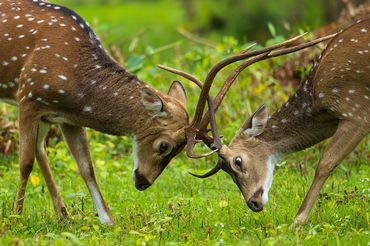Welcome To
Xplore Wild Expedition
We take you deep into the heart of the wild where every trail tells a story and every frame has a soul.
Signed in as:
filler@godaddy.com
We take you deep into the heart of the wild where every trail tells a story and every frame has a soul.

We specialize in curating immersive wildlife photography tours. Our expeditions are designed to help you capture breathtaking moments in the wild, with expert on-field guidance and personalized post-processing support to elevate your images.
Join us on this extraordinary wildlife trip.
1/10

Nestled at the foothills of the Western Ghats in Karnataka, Bandipur Tiger Reserve is a biodiversity hotspot and one of India’s most well-preserved wildlife sanctuaries.
What makes Bandipur unique is its moist and dry deciduous forest, home to towering teak, rosewood, and sandalwood trees. During different seasons, the forest transforms in character lush green during monsoons and golden-brown in summer, making it a paradise for wildlife photographers and nature lovers.
This ecosystem supports a rich variety of wildlife including:
🌳 Bengal Tigers
🦌 Spotted Deer & Sambar
🐘 Asiatic Elephants
🐆 Leopards
🦜 Countless birds, reptiles, and butterflies
The natural lighting through open canopies and the changing hues of the forest offer exceptional opportunities for dramatic and soulful captures — whether it’s a tiger crossing a sun-dappled path or elephants marching through golden mist.








Tucked beside the Kabini River in Karnataka, the Kabini Forest forms the southern jewel of the Nagarhole Tiger Reserve, a pristine stretch of wilderness that belongs to the Nilgiri Biosphere Reserve — one of the most ecologically rich regions in India.
What sets Kabini apart is its striking landscape of moist and dry deciduous forest interspersed with open meadows, bamboo groves, and the shimmering backwaters of the Kabini Reservoir. These elements not only create a dramatic canvas of seasonal change — from lush emerald greens during the rains to warm amber tones in summer — but also serve as a vital lifeline for wildlife, drawing large gatherings of animals to its shores.
This vibrant ecosystem is a haven for a stunning array of wildlife including:
🐅 Bengal Tigers
🐆 Leopards – and the elusive Black Panther
🐘 Large herds of Asiatic Elephants
🦌 Sambar, Spotted Deer & Gaur
🦉 Over 250 bird species, reptiles, and rare amphibians
Kabini is especially famous for its rare sightings of the melanistic leopard, commonly known as the Black Panther, making it one of the few places on Earth where this majestic creature has been regularly documented.
The interplay of misty mornings, glowing sunsets, and light filtering through ancient trees creates spellbinding moments — a leopard perched on a tree, elephants bathing in golden waters, or a tiger patrolling the forest edge. For photographers, naturalists, and soul seekers, Kabini is not just a forest — it’s an experience etched in light, shadow, and silence.

Nestled in the Western Ghats of Kerala, Munnar is a paradise for nature lovers, photographers, and wildlife enthusiasts. Known for its rolling tea gardens, cool climate, and mist-covered hills, Munnar offers a surreal landscape that transforms during the monsoons into a lush, green wonderland.
But beyond the scenic beauty lies a lesser-known treasure – its rich and vibrant macro habitat. The forests and shola-grassland ecosystems of Munnar are teeming with micro wildlife wonders – from vividly colored frogs and camouflaged lizards to enchanting snakes and fascinating insects. This is where the magic of macro photography truly comes alive.
Munnar is part of the Western Ghats, a UNESCO World Heritage Site and one of the eight "hottest hotspots" of biodiversity in the world. It is home to endemic species like the Raorchestes resplendens (Resplendent Bush Frog), Malabar Gliding Frog, and various species of shieldtail snakes, tree frogs, and jewel beetles.
As the monsoon breathes life into the land, these tiny creatures emerge, offering an unmatched opportunity for close-up encounters and rare photographic moments. Whether you're chasing the glimmer of a dewdrop on a spider web or the textures of a moss-covered tree frog, every inch of this landscape is a story waiting to be captured.
Below gallery Images By Nitesh Anandan.

Nestled in the heart of Madhya Pradesh, Kanha Tiger Reserve is one of India’s most celebrated national parks—renowned for its thriving tiger population, iconic barasingha (swamp deer), and ancient sal forests that seem to whisper jungle secrets. Covering over 940 square kilometers, Kanha is not just a wildlife haven; it’s a visual symphony of misty meadows, sunlit clearings, and forest trails that make it an absolute paradise for wildlife photographers.
From the golden morning light piercing through the sal trees to dramatic sightings of big cats silhouetted in winter mist, every frame captured in Kanha feels like a scene from a dream. The unique mix of dense jungle, sprawling meadows, and seasonal streams creates the perfect canvas for magical moments in nature.
Kanha is one of the best-managed parks in India with a healthy population of tigers. It offers excellent chances of sightings, especially during the winter when the crisp, cool air keeps wildlife active throughout the day.
Kanha is the only place in the world where the hardground barasingha, or swamp deer, thrives. Once on the brink of extinction, the successful conservation of this elegant species is one of Kanha’s proudest stories. Their graceful herds, often grazing in open meadows, are a sight to behold.
Sal trees dominate the Kanha landscape, forming towering green cathedrals that filter light in the most dramatic ways—ideal for playing with light and shadows in your compositions. These forests come alive in winter with mist layering their trunks, creating surreal and moody scenes.
Beyond tigers and barasingha, Kanha is teeming with leopards, wild dogs (dholes), sloth bears, gaurs, and over 300 species of birds, making every safari ride rich in diversity and surprise.

Nestled in the rugged folds of Rajasthan’s Sawai Madhopur district, about four hours from Jaipur, lies one of India’s most iconic wildlife sanctuaries
Ranthambore National Park. Spread across rolling hills, ancient ruins, and shimmering lakes, this legendary reserve stands at the meeting point of the Aravalli and Vindhya ranges. Once the royal hunting grounds of the Maharajas of Jaipur, today it is a haven for wild tigers a place where the echoes of history blend with the raw pulse of nature.
Ranthambore is not just a forest; it’s a living story of India’s wilderness. The 10th-century Ranthambore Fort rises dramatically above the park, its weathered walls watching over forests that have reclaimed the land. Below its ramparts, tigers roam freely through the dry deciduous jungle, often crossing ancient stone pathways and lakes that mirror their golden reflections. The park’s landscapes — dotted with banyan trees, crumbling temples, and water bodies like Padam Talao make every safari feel like stepping into a timeless world where man and nature once coexisted in royal balance.
Declared a wildlife sanctuary in 1955 and included under Project Tiger in 1973, Ranthambore has since become one of India’s proudest conservation success stories. Today, it spans over 1,300 square kilometres including core and buffer zones, home to a thriving population of Bengal tigers, leopards, sloth bears, striped hyenas, sambar deer, and hundreds of bird species. Its open, dry terrain and scattered lakes make tiger sightings here more frequent than most reserves a reason why Ranthambore remains every wildlife photographer’s dream.
Each zone of the park from the forested valleys of Zone 1 to the lakes and ruins of Zone 3 —tells its own tale. Visitors often spot the big cats resting under fig trees, patrolling the trails, or cooling off in the lakes as peacocks dance on the shorelines.
The park’s tigers, known by names like Arrowhead, Riddhi, and Sultan, have become legends in their own right, carrying forward the legacy of famous tigresses like Machhli, once hailed as the Queen of Ranthambore.
Safaris here are a blend of thrill and reverence — the air thick with the scent of dhok trees, the silence broken only by alarm calls of sambar deer. Whether you explore in an open jeep or a canter, each turn in Ranthambore holds the promise of an encounter you’ll never forget. The best time to visit is from October to March when the forest is lush and active, though the summer months from April to June offer the highest chance of tiger sightings as animals gather near waterholes.
Ranthambore is more than just a destination; it’s an emotion a reminder that wild India still breathes beneath ancient forts and within the heartbeats of its forests. For travellers, photographers, and nature lovers alike, it stands as a timeless chapter in the story of India’s tigers where every roar echoes through history.
Step into the wild heart of Rajasthan track legends, frame the roar.
Last One Slot Left
Wildlife of Jhalana
Discover the Jhalana Leopard Safari in Jaipur, one of India’s best destinations for leopard sightings and urban wildlife photography. Located in the Aravalli hills, this 20+ sq km reserve hosts over 30 leopards, making it one of the highest leopard-density zones in the country. Just minutes from the Pink City, Jhalana offers an unmatched blend of accessibility, wilderness, and thrilling safari experiences. Visitors can explore rocky terrains, natural trails, and dense scrub forests while spotting leopards, deer, nilgai, hyenas, foxes, jungle cats, langurs, and 100+ bird species.
Led by expert naturalists in open gypsies, each safari provides a safe, guided, and highly rewarding adventure. Whether you’re a wildlife photographer, nature lover, or a first-time traveler, Jhalana Leopard Reserve promises unforgettable moments, incredible photography opportunities, and one of the most consistent big cat sightings in India.


During an morning safari, as the mist lifted, I witnessed a moment of pure magic — a tigress walking calmly with her three cubs. Their bright coats stood out against the monsoon greens.
Ahead, a herd of chital froze, alert but still. No chase, no panic — just a quiet, powerful exchange between predator and prey. A lesson in balance, in coexistence. Kanha in the rains is more than a forest. It’s an

In the lush monsoon grasslands of Kanha, an unusual yet captivating scene unfolded. A Lesser Adjutant Stork, often overlooked in the grandeur of big cats, took center stage as it landed gracefully with wings outstretched. Nearby, a herd of chital deer stood still, their curious eyes fixed on this unexpected visitor. For a brief moment, predator and prey dynamics faded replaced by wonder and stilln

At Xplore Wild Expedition, our mission is to make the safari experience accessible to all by leading exceptional wildlife tours and photography expeditions. We aim to foster a deep connection with nature while promoting conservation and awareness through immersive, educational journeys into the wild
Copyright © 2025 Xplore Wild Expedition – All Rights Reserved.
Photo © Prince Pravin
We use cookies to analyze website traffic and optimize your website experience. By accepting our use of cookies, your data will be aggregated with all other user data.